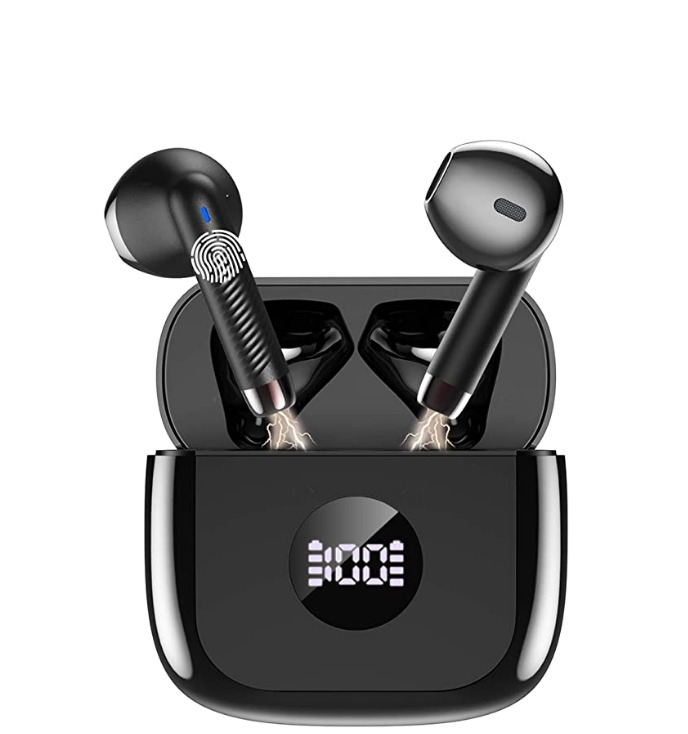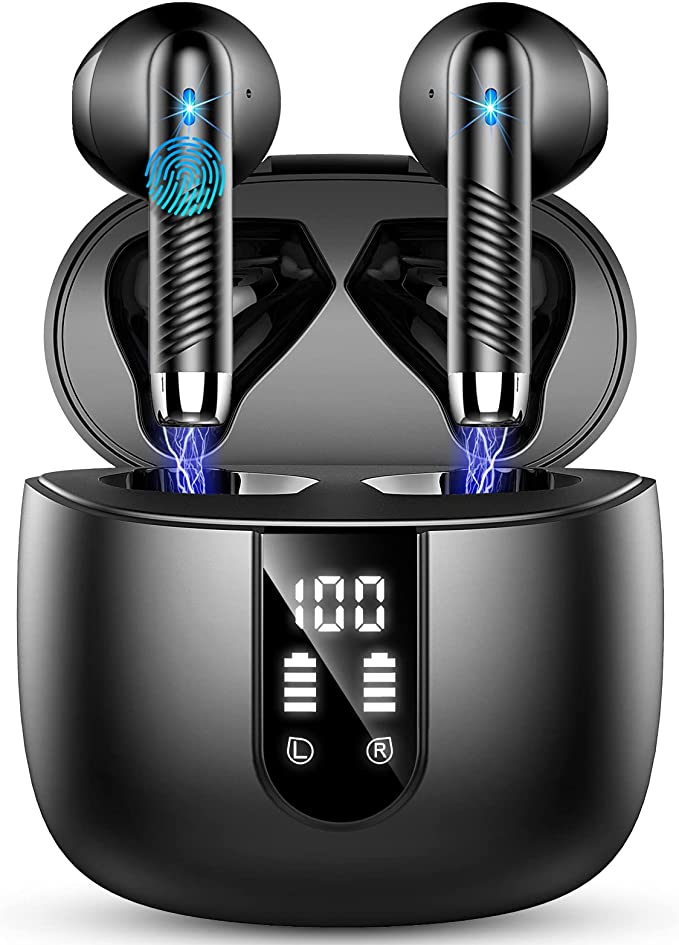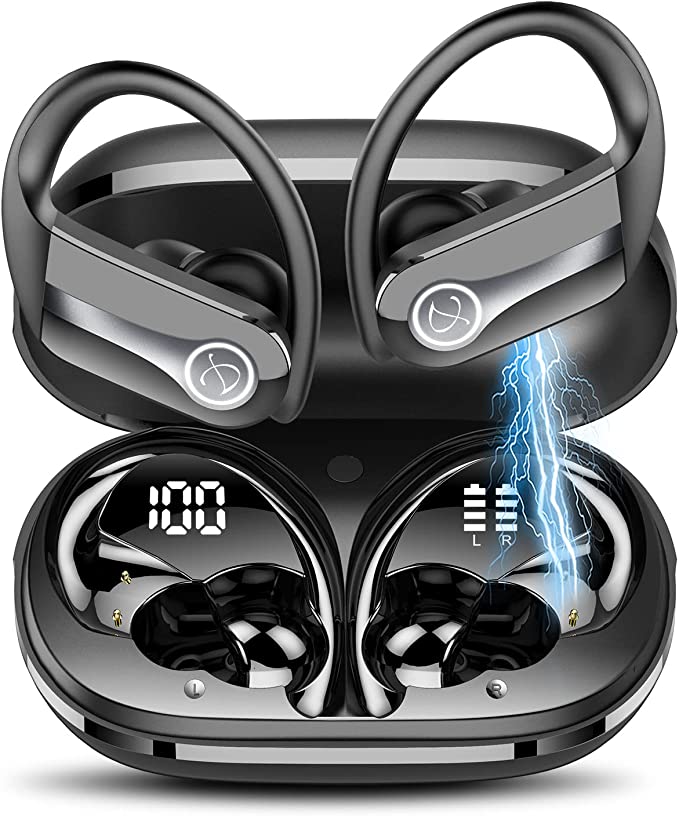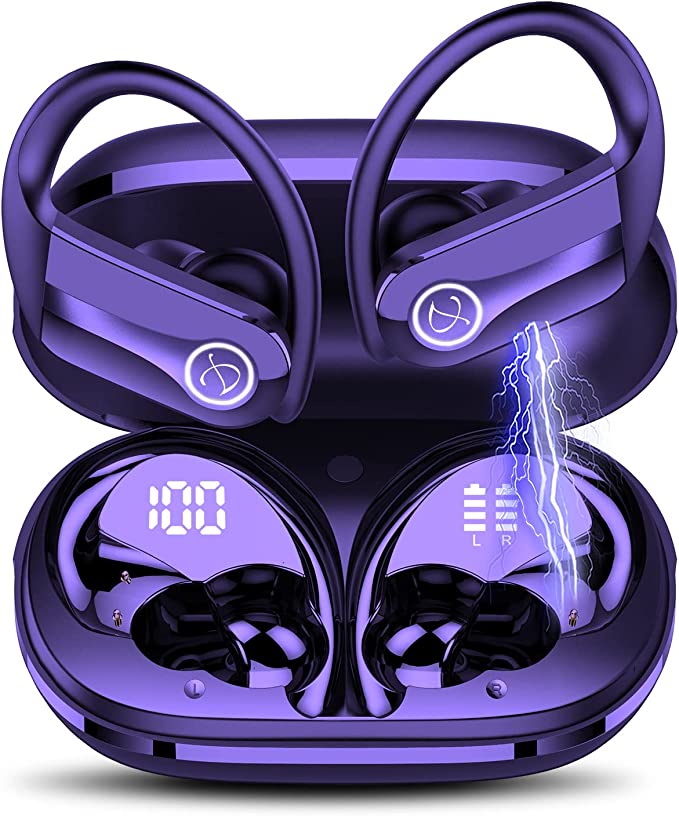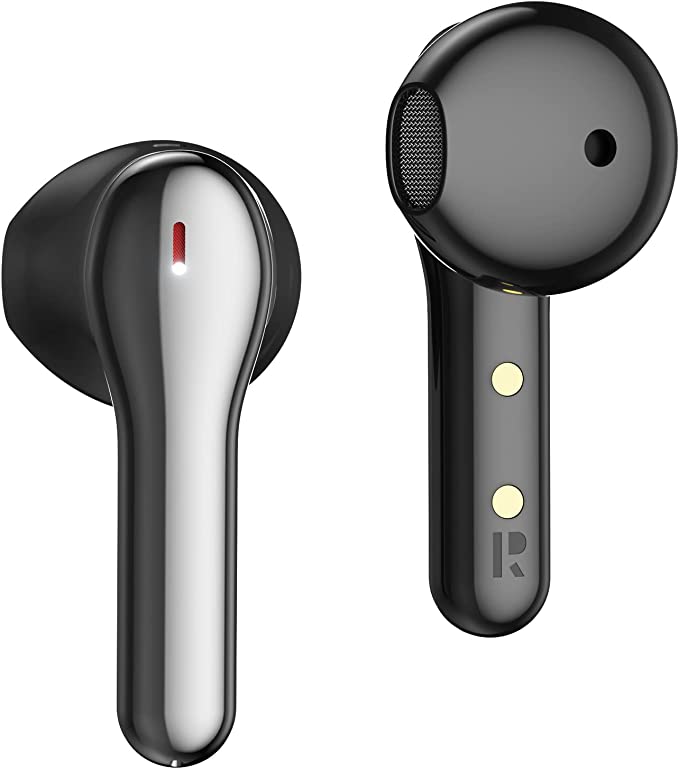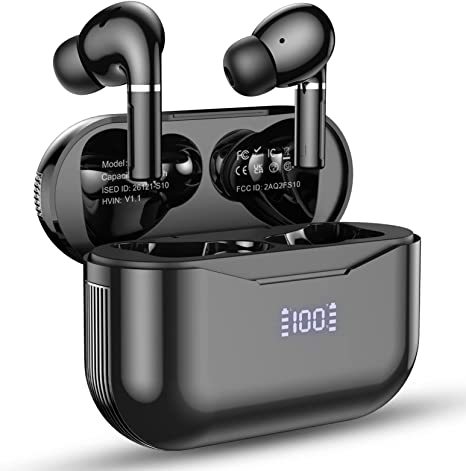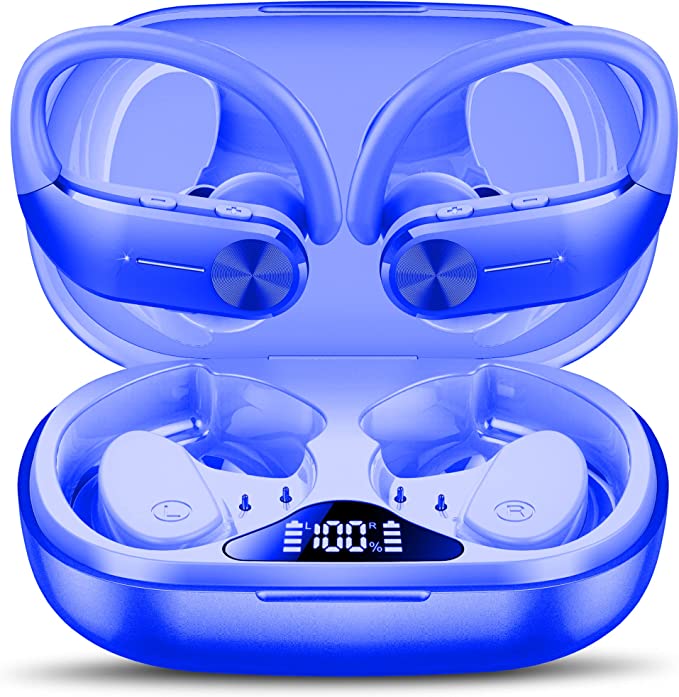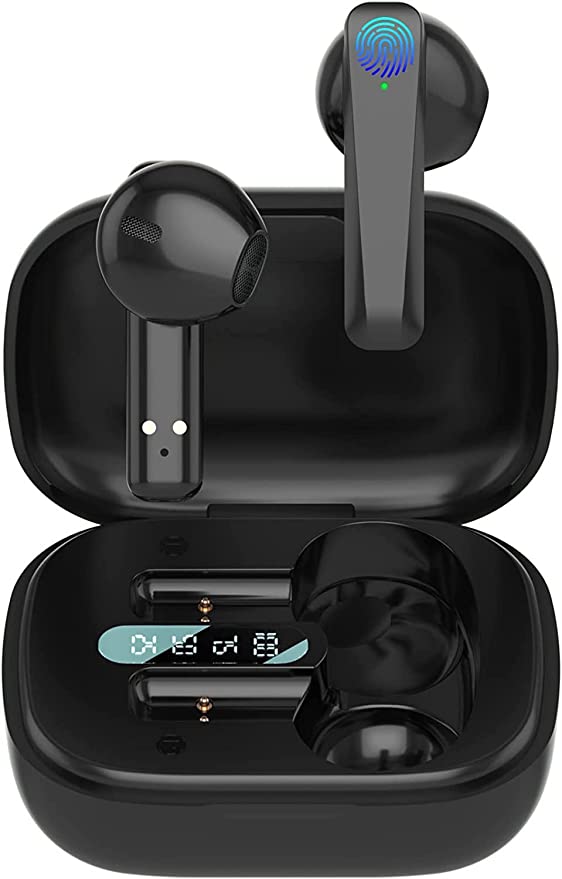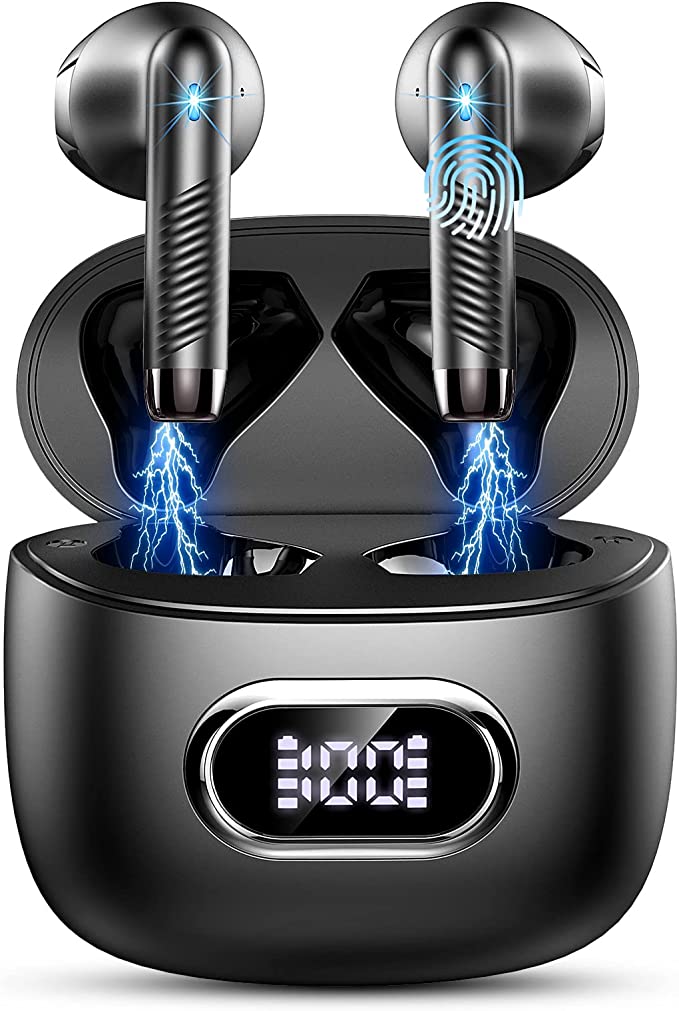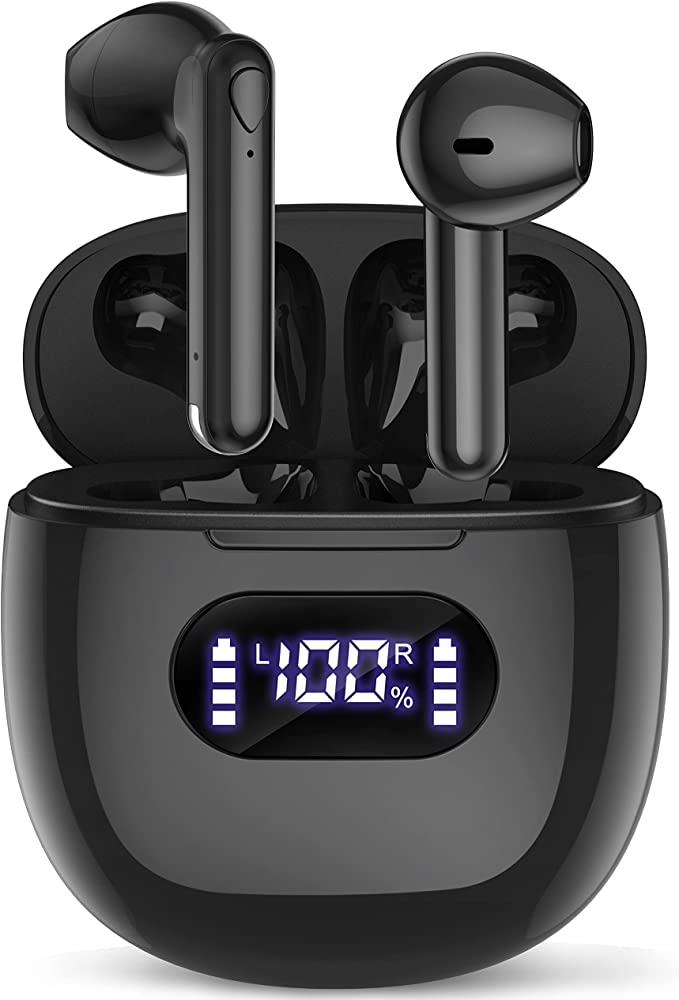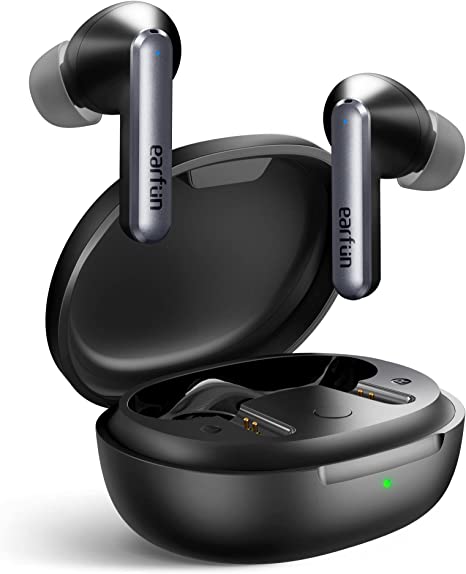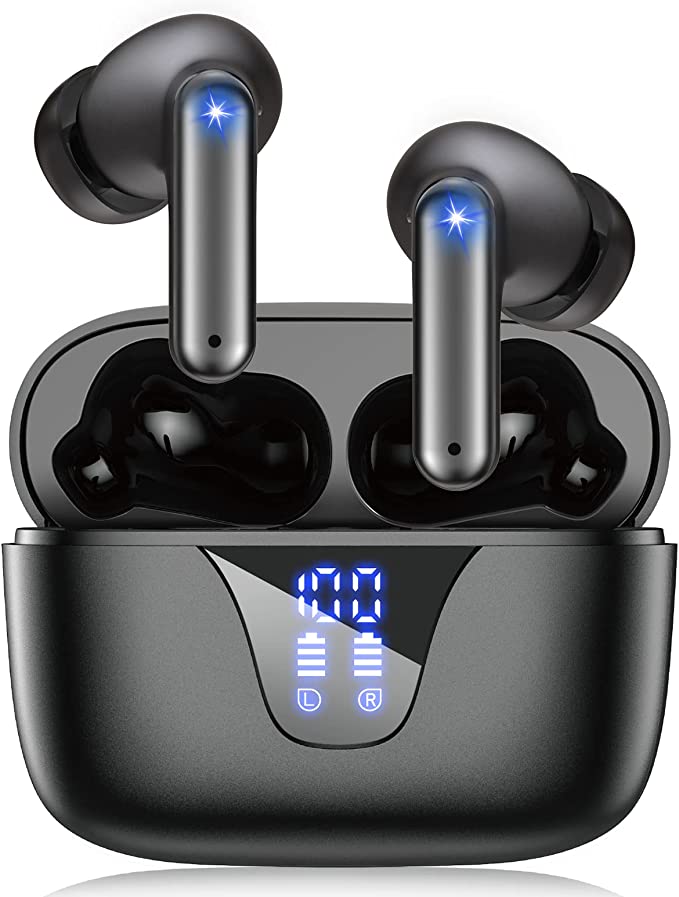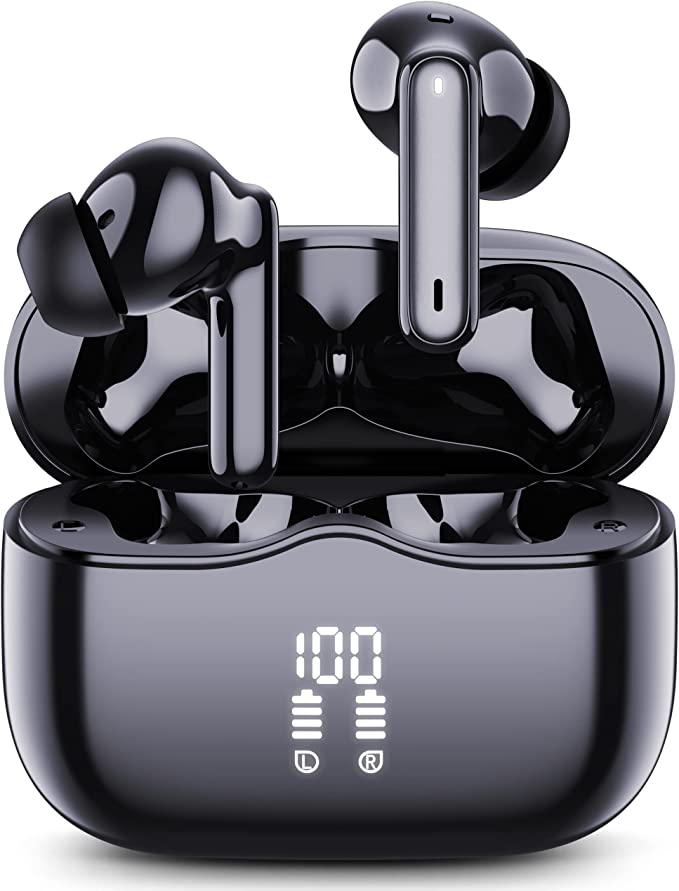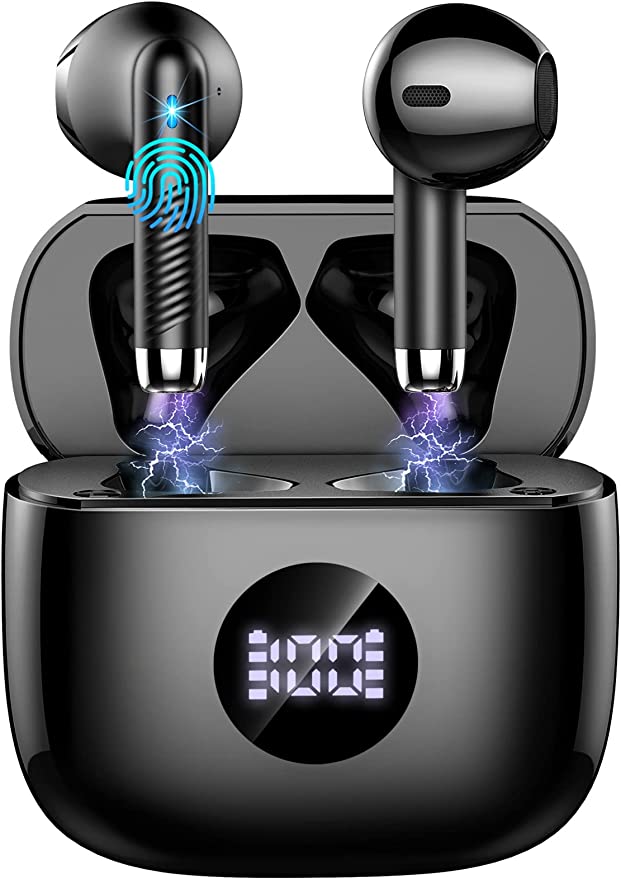Donerton I66 Wireless Earbuds: Unpacking Bluetooth 5.4, IP7 Waterproofing, and Sustainable Sound
Update on May 21, 2025, 7:26 a.m.
We live in a world invisibly threaded by sound and connection. From the focused rhythm of a morning jog powered by energizing beats, to the crucial business call taken movilidadly between meetings, or the immersive soundscape of an audiobook transporting us on a crowded commute, wireless audio devices have become intimate extensions of our daily lives. But have you ever paused to consider the intricate dance of technology nestled within these tiny earpieces? What quiet marvels of engineering allow them to serenade us, connect us, and sometimes, even offer a momentary escape?
Today, we embark on a journey, not just to review a product, but to explore the fascinating science woven into its fabric. Our subject for this exploration is the Donerton I66 Wireless Earbuds. While they present a list of features common to many contemporary earbuds – Bluetooth 5.4, IP7 waterproofing, claims of “Deep Stereo Bass” and “HiFi Stereo,” and a nod to sustainability – we’ll delve deeper. Let’s peel back the layers and understand the principles that make these modern audio companions tick, transforming a simple spec sheet into a story of innovation and experience.

The Unseen Handshake – Decoding Bluetooth 5.4
Imagine an invisible, yet incredibly sophisticated, handshake occurring every time you pair your earbuds to your phone or laptop. This is, in essence, what Bluetooth technology facilitates. The Donerton I66 earbuds boast Bluetooth 5.4, one of the more recent iterations of this ubiquitous wireless standard. But what does that number truly signify for your daily listening?
The story of Bluetooth itself is rather charming. It’s named after Harald “Bluetooth” Gormsson, a 10th-century Danish king famed for uniting disparate Danish tribes. Similarly, the inventors of Bluetooth technology in the late 1990s envisioned it as a universal standard to unite different devices wirelessly. From those early, sometimes clunky, beginnings, Bluetooth has evolved dramatically.
Each new version aims to speak a more refined “language of connection.” Bluetooth 5.4 continues this tradition, generally offering several potential improvements over its predecessors. While the specific enhancements implemented can vary by the manufacturer’s design and the chipset used (details not provided for the I66), the 5.4 standard itself is built to support:
- Enhanced Connection Stability: This is perhaps the most crucial aspect for users. Bluetooth 5.4 can offer more robust links, meaning fewer frustrating dropouts or stutters, especially in environments crowded with other wireless signals (think busy cafes or public transport). It’s designed to be more resilient to interference.
- Improved Power Efficiency: Newer Bluetooth versions are often optimized to sip power more frugally. For earbuds, which house tiny batteries, this can translate to longer listening times between charges – though the actual battery life of the Donerton I66 is one of those details not specified in the provided information, it’s a general benefit the underlying technology strives for.
- Potentially Higher Data Throughput or New Audio Codecs: While not explicitly stated for the I66, Bluetooth 5.4 paves the way for advancements like LE Audio, which promises not only better audio quality at lower data rates (thanks to codecs like LC3) but also new capabilities such as Auracast™ broadcast audio. Auracast could, for instance, allow you to share your audio stream with multiple nearby Bluetooth headphones or listen to public broadcasts in airports or gyms directly through your earbuds. Whether the I66 specifically leverages these advanced facets of 5.4 would depend on its internal hardware and software.
In the realm of pure science, Bluetooth operates using short-wavelength UHF radio waves in the ISM band from 2.400 to 2.485 GHz. It employs a technique called frequency-hopping spread spectrum, where the signal rapidly switches frequencies within this band to combat interference and enhance security. Think of it as an incredibly nimble courier, constantly changing its route to deliver its precious audio packets (your music or call audio) reliably and efficiently from your source device to your ears.
So, when the Donerton I66 highlights Bluetooth 5.4, it’s signaling its use of a contemporary wireless protocol designed for a smoother, more dependable, and potentially more power-conscious audio experience. For you, the listener, this means the technology aims to keep that unseen handshake strong and clear, letting the music play on without interruption, whether you’re engrossed in a podcast or taking an important call on the move.

Braving the Elements – The IP7 Armor
Life is unpredictable, and often, a little bit wet. Whether it’s an unexpected downpour during your commute, the inevitable sweat of a vigorous workout, or that heart-stopping moment when a glass of water tips precariously close to your tech, a device’s ability to withstand moisture is a genuine concern. The Donerton I66 earbuds come with an IP7 waterproof rating, suggesting they’re built with a degree of aquatic resilience.
But what does “IP7” actually translate to in practical terms? The “IP” stands for Ingress Protection, and the numbers that follow are codes defined by the International Electrotechnical Commission (IEC) in their 60529 standard. This standard grades the resistance of an enclosure (like an earbud casing) against the intrusion of foreign objects (the first digit) and water (the second digit).
In the case of “IP7”:
- The first digit here is often represented by an ‘X’ if the product hasn’t been specifically tested or rated for protection against solid particles like dust (so, technically it would be IPX7). The provided information just states “IP7,” which conventionally focuses on the water protection level.
- The ‘7’ is the crucial part for water resistance. It signifies that the device is protected against the effects of temporary immersion in water under standardized conditions. Specifically, an IPX7 rating means the earbuds should withstand being submerged in up to 1 meter (about 3.3 feet) of fresh water for a maximum of 30 minutes.
To achieve such a rating, manufacturers employ careful sealing techniques, using gaskets, O-rings, and water-resistant adhesives or membranes to protect the sensitive internal electronics from moisture. It’s like equipping each earbud with a tiny, custom-fitted suit of armor designed to keep water out.
For the Donerton I66 user, this IP7 rating offers peace of mind in several everyday scenarios:
- Exercise Enthusiasts: Sweat is no longer a primary concern for damaging your earbuds.
- All-Weather Commuters: Getting caught in the rain shouldn’t mean an immediate audio blackout.
- Minor Accidents: An accidental quick dip in a sink or a spilled drink might not be a death sentence for the earbuds.
However, it’s vital to understand the limitations of this “armor”:
- Not for Swimming: IPX7 is for temporary immersion, not for prolonged underwater activities like swimming. The pressure at greater depths or for longer durations can compromise the seals.
- Fresh Water Only: The tests are typically conducted in fresh water. Saltwater (from the sea) or chlorinated water (from pools) can be more corrosive and damaging.
- No High-Pressure Jets: It doesn’t protect against powerful water jets or steam.
- Wear and Tear: Over time, seals can degrade, so the level of protection might diminish with age and use.
- Hot Water/Saunas: Extreme temperatures can also affect the integrity of the seals.
So, while the IP7 rating on the Donerton I66 provides a commendable shield against common moisture-related mishaps, it’s not an invitation for aquatic recklessness. It’s a practical feature designed to make the earbuds a more robust and reliable companion for an active and sometimes messy life.
The Symphony Within – Crafting Your Personal Soundscape
Beyond connectivity and durability, the heart of any earbud experience lies in the sound it produces. The Donerton I66 promises a rich auditory journey with terms like “HiFi Stereo” and “Deep Stereo Bass,” alongside “Sound Isolation” and a “Noise Cancelling Mic.” Let’s tune into what these mean.
The Quest for “True” Sound: What is HiFi Stereo?
“HiFi,” short for High Fidelity, is a term that echoes from the golden age of audio. It represents the ambition to reproduce sound that is as faithful as possible to the original recording, with minimal distortion, a wide frequency response, and a clear, detailed presentation. It’s about hearing the music as the artist and sound engineer intended.
Stereo sound, on the other hand, is the magic that brings dimensionality to your music. By delivering two independent audio channels (left and right) to each ear, it creates an illusion of space and directionality. You can perceive instruments placed across a soundstage, vocals centered, or sound effects moving around you. Think of it as the difference between a flat, one-dimensional painting and a rich, three-dimensional diorama. In a choir, it’s the harmony created when distinct voices sing together, each from its own position, yet blending into a cohesive whole.
For earbuds like the Donerton I66 to aim for “HiFi Stereo,” it implies a focus on the quality of their internal components – the miniature speakers called drivers – and the acoustic design of their casings. While the product details don’t specify driver materials or precise acoustic engineering, the HiFi aspiration suggests a commitment to clarity, accuracy, and an immersive listening experience.
Feeling the Beat: The Science of Deep Bass
Music isn’t just heard; it’s often felt, especially those resonant low frequencies that we call bass. The claim of “Deep Stereo Bass” suggests the Donerton I66 earbuds are tuned to give prominence to these foundational tones, making your music feel more alive, punchy, and atmospheric.
The perception of bass is tied to low-frequency sound waves (typically from 20 Hz to 250 Hz). These longer wavelengths carry a sense of power and warmth. To achieve satisfying bass in tiny earbuds, engineers consider several factors:
- Driver Excursion: The ability of the driver’s diaphragm to move back and forth. Greater movement can displace more air, generating stronger low-frequency sound.
- Acoustic Seal: A snug fit in the ear canal is crucial. This creates a sealed acoustic chamber, preventing bass frequencies from leaking out and allowing them to build pressure, thus enhancing their perceived loudness and impact.
- Tuning: The overall acoustic design and electronic tuning of the earbuds play a significant role in shaping the frequency response, emphasizing or balancing the bass relative to other frequencies.
When you listen to genres like electronic dance music, hip-hop, or even orchestral pieces with powerful cellos and double basses, a well-rendered deep bass can transform the experience from merely listening to truly feeling the rhythm and a more visceral connection to the music.
Your Personal Sound Bubble: The Quietude of Sound Isolation
In our often-noisy world, finding a pocket of auditory peace can be a blessing. The Donerton I66 earbuds are described as having “Sound Isolation” for noise control. This is a passive feature, meaning it doesn’t involve complex electronics to cancel out noise.
Instead, sound isolation relies on the physical design of the earbuds – specifically, their in-ear form factor. By fitting snugly into your ear canals, much like earplugs, they create a physical barrier that blocks a certain amount of external ambient sound from reaching your eardrums. Think of it as wearing earmuffs, but on a much smaller, more targeted scale. This is fundamentally different from Active Noise Cancellation (ANC), a more sophisticated technology that uses microphones to detect external noise and then generates opposing sound waves to actively neutralize it. The Donerton I66 does not claim ANC for the listener.
The benefit of sound isolation is that it can significantly improve listening clarity, especially in moderately noisy environments like a busy office or during a commute. By reducing the intrusion of outside chatter or traffic rumble, you can enjoy your music or podcast at lower volumes, which is also better for your hearing health. It helps create your personal “sound bubble,” allowing for greater immersion in your chosen audio content.
“Can You Hear Me Now?” – The Role of the Noise-Cancelling Microphone
Finally, there’s the “Noise Cancelling Mic.” It’s crucial to understand that this feature is designed for the benefit of the person on the other end of your phone call, not for enhancing your listening experience.
A noise-canceling microphone aims to make your voice clearer to your call partner by reducing the amount of background noise that gets transmitted along with your speech. This is often achieved through:
- Multiple Microphones: Some systems use two or more microphones. One primarily captures your voice, while the others pick up ambient sounds. Algorithms then process these signals to differentiate your voice from the noise and suppress the latter.
- Signal Processing: Sophisticated software analyzes the sound patterns, identifying and attenuating persistent background noises (like a fan, traffic, or crowd babble) while preserving the clarity of your speech.
So, if you’re making an important call from a bustling street or a noisy café, the noise-canceling microphone on the Donerton I66 is intended to help your voice cut through the clamor, ensuring your listener can hear you more distinctly. It’s a feature that enhances the practicality of the earbuds for communication in real-world environments.
Sound with a Conscience – The Echo of Sustainability
In an age of increasing environmental awareness, the lifecycle of our gadgets – from production to disposal – is coming under greater scrutiny. The Donerton I66 earbuds are presented with sustainability features, noting they are Carbonfree Certified by Carbonfree.org and recognized as Climate neutral by ClimatePartner.
What do these labels signify?
- Carbonfree Certified: This generally means that an organization (Carbonfree.org, a third-party non-profit) has assessed the carbon footprint associated with the product – the greenhouse gas emissions generated during its manufacturing, transportation, and potentially its usage and disposal. The “Carbonfree” status implies that these emissions have been measured, and then offset through investments in projects that reduce or sequester an equivalent amount of carbon dioxide elsewhere (e.g., renewable energy projects or reforestation efforts).
- Climate neutral by ClimatePartner: ClimatePartner is another organization that helps companies calculate and reduce their carbon emissions, and then offset the unavoidable ones. “Climate neutral” similarly indicates that the product’s carbon footprint has been balanced out.
These certifications suggest that Donerton has taken steps to acknowledge and address the environmental impact of the I66 earbuds. For consumers, particularly in North America where eco-consciousness is a growing value, such labels offer an opportunity to make purchasing decisions that align with their environmental concerns. It indicates a brand’s willingness to participate in a broader movement towards more responsible manufacturing and consumption. While the specific details of Donerton’s offsetting projects or reduction strategies aren’t provided in the initial information, the presence of these third-party certifications is a positive signal. It reflects a trend in the electronics industry to move beyond just features and performance, to also consider the planet.
The Unanswered Questions & The Informed Listener
As with any product, a specifications sheet tells only part of the story. The initial information provided for the Donerton I66, while highlighting key technologies, also leaves several common user questions unanswered – a fact acknowledged by the “Ask Rufus” or “Looking for specific info?” sections on a typical product page. Questions regarding:
- Battery life on a single charge and with the charging case.
- Compatibility and integration with voice assistants like Siri or Google Assistant.
- How securely they stay in place during vigorous exercise.
- Comfort levels for extended wear.
- The overall stability and consistency of the Bluetooth connection in real-world, varied scenarios.
Furthermore, the product information explicitly states “No customer reviews” at the time of its listing. This is important to note. It likely means the product is relatively new to the market or, on the platform where it was listed, hasn’t yet garnered public feedback.
Transparency about what isn’t detailed is just as important as highlighting what is. For you, the discerning listener and potential consumer, this underscores the importance of seeking out more comprehensive information as it becomes available. A spec sheet, like the one we’ve deconstructed, offers a fantastic starting point for understanding the potential of a device based on the technologies it employs. The next step is often to look for in-depth reviews from trusted sources (once available), further manufacturer clarifications, or community feedback to get a fuller picture of real-world performance and user experience.
Concluding Thoughts: Beyond the Wires – Listening to the Future
Our journey through the technological landscape of the Donerton I66 Wireless Earbuds reveals a microcosm of modern personal audio. From the invisible ballet of Bluetooth 5.4 ensuring a stable connection, to the resilience offered by IP7 waterproofing, the nuanced pursuit of HiFi sound, and the welcome nod towards environmental responsibility, these tiny devices are packed with sophisticated science.
Understanding the principles behind these features – what “Bluetooth 5.4” truly promises, how “IP7” offers practical protection, the difference between passive sound isolation and a noise-canceling microphone – empowers us. It allows us to move beyond marketing terms and appreciate the engineering and thought that go into crafting these everyday companions. It also encourages us to ask informed questions and seek out a complete understanding before making a choice.
The world of audio technology is constantly evolving, driven by our desire for richer sound, seamless connectivity, greater convenience, and, increasingly, more sustainable practices. As we listen to our music, podcasts, and the voices of those we connect with, it’s worth remembering the unheard harmony of science and innovation that makes it all possible. May your listening always be informed, and your connection to the world, and its sounds, ever clearer.

